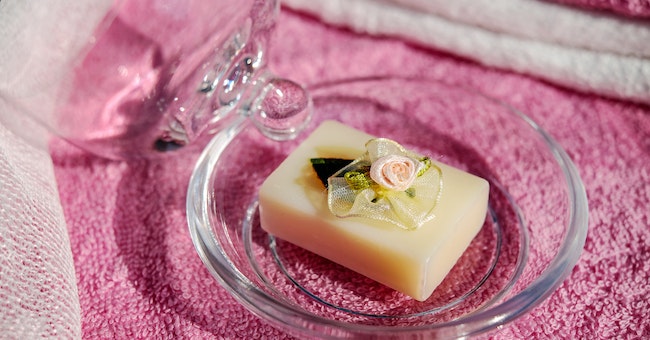The Art of Massage: Unlocking the Power of Healing Touch

Introduction
In the fast-paced and often stressful world we live in, the importance of self-care cannot be overstated. Among the myriad of self-care practices, one that stands out for its holistic benefits is the art of massage. Beyond being a luxurious indulgence, massage offers a range of physical, mental, and emotional advantages that contribute to overall well-being. In this blog, we'll delve into the world of massage, exploring its origins, various techniques, and the science behind its therapeutic effects.
A Historical Journey: The Origins of Massage
Massage has a rich history that dates back thousands of years. Its origins can be traced to ancient civilizations such as China, India, Egypt, and Greece. These cultures recognized the power of touch as a means to promote healing and relaxation. The word "massage" itself comes from the French word "masser," meaning to knead or press gently.
In ancient China, massage was an integral part of traditional Chinese medicine, aimed at balancing the body's energy or "qi." In India, Ayurvedic massage was practiced to restore harmony between the mind, body, and spirit. The Greeks and Romans incorporated massage into their bathing routines, realizing its potential to improve circulation and alleviate pain.
The Science of Touch: How Massage Works
The therapeutic effects of massage go beyond mere relaxation. Numerous scientific studies have confirmed the physiological changes that occur during a massage session. One of the key mechanisms is the release of endorphins, often referred to as the body's natural painkillers and mood elevators. These neurotransmitters help reduce stress, anxiety, and depression while promoting a sense of well-being.
Massage also stimulates blood circulation, enhancing the delivery of oxygen and nutrients to cells while aiding in the removal of waste products. Improved circulation supports tissue healing and reduces muscle soreness. Furthermore, the gentle pressure applied during massage activates the parasympathetic nervous system, which induces the relaxation response and lowers the heart rate and blood pressure.
Exploring Massage Techniques
The world of massage is vast, encompassing a wide array of techniques, each with its unique benefits and applications. Here are some popular massage modalities:
Swedish Massage: This is one of the most common types of massage, involving long, gliding strokes, kneading, friction, tapping, and gentle stretching. It's known for its relaxation benefits and is often used as a foundation for other techniques.
Deep Tissue Massage: Ideal for targeting chronic muscle tension, deep tissue massage uses slower, more forceful strokes to reach deeper layers of muscle and connective tissue. It's effective for alleviating muscle pain and improving flexibility.
Sports Massage: Geared toward athletes, this technique focuses on preventing and treating injuries, enhancing performance, and facilitating recovery. It combines various massage strokes with stretching and active movements.
Thai Massage: Rooted in traditional Thai medicine, this technique involves a combination of yoga-like stretches, acupressure, and rhythmic compressions. It's performed on a floor mat, and the recipient is fully clothed.
Hot Stone Massage: Smooth, heated stones are placed on specific points on the body to warm and relax the muscles. The therapist may also use the stones to massage the body, providing a soothing and deeply relaxing experience.
Aromatherapy Massage: This combines the benefits of massage with the use of essential oils derived from plants. The oils are chosen for their specific therapeutic properties and are incorporated into the massage session to enhance relaxation and overall well-being.
Beyond the Physical: Emotional and Mental Benefits
While the physical benefits of massage are well-documented, its impact on emotional and mental well-being is equally profound. The serene environment, soothing music, and skilled touch work together to create a sense of tranquility. Massage has been shown to reduce the production of stress hormones such as cortisol and increase the release of oxytocin, often referred to as the "love hormone." Oxytocin promotes feelings of connection, trust, and emotional bonding.
Massage also provides a reprieve from the demands of daily life, allowing individuals to disconnect from their devices and responsibilities. This mental break fosters mindfulness and presence, promoting a sense of inner calm and clarity. For those struggling with anxiety or depression, regular massage sessions can complement other forms of therapy by promoting relaxation and reducing symptoms.
Recommended Online Resources for Massage
Online Massage Therapy Program - SOCHi
Elevate your career with the advanced Online Massage Therapy Program at Southern California Health Institute (SOCHi). Experience flexible hybrid/remote learning, accessible on any internet-connected device. Dive deep into anatomy, physiology, massage techniques, and business practices, gaining essential skills to thrive as a certified massage therapist. Prepare for success with comprehensive training and the opportunity to take the California Massage Therapy Council (CAMTC) certification exam upon completion.
Course highlights:
Advanced Online Learning: Access the program from any device, anywhere.
Comprehensive Curriculum: Covers anatomy, massage techniques, and business practices.
Certification Preparation: Get ready for the California Massage Therapy Council (CAMTC) exam.
Hybrid Learning: Blend online classes with remote instruction for flexibility.
Expert Instruction: SOCHi's program equips you for a successful massage therapy career.
Hawaiian Lomi Lomi Massage Certificate Course (5CEU)
Hawaiian Lomi Lomi Massage Certificate Course (5CEU) offers a comprehensive online learning experience for massage therapists. Led by renowned instructor Mark Perren-Jones, with 20+ years of expertise, this course equips participants with the art of Lomi Lomi massage. Learn the full-body sequence, address postural issues, and more. Earn a certificate from Isla Verde Spa Training Academy, gain 5 CEU credits from the National Certification Board for Therapeutic Massage and Bodywork, and access benefits from the Complementary Therapists Accredited Association (CTAA). Elevate your practice and join the legacy of skilled Lomi Lomi practitioners.
Course highlights:
Expert Instructor: Led by best-selling massage instructor with 20+ years of experience.
Lomi Lomi Mastery: Learn the art of fabulous Lomi Lomi massage.
Comprehensive Curriculum: Master full-body sequence, body alignment, and postural correction.
Recognized Certification: Receive a certificate from Isla Verde Spa Training Academy.
CEU Credits: Earn 5 CEU credits from National Certification Board for Therapeutic Massage and Bodywork.
CTAA Membership: Eligible to join Complementary Therapists Accredited Association for exclusive benefits.
Manual Lymphatic Drainage Massage Certificate Course (6CEU)
Discover the transformative power of Manual Lymphatic Drainage (MLD) massage techniques in this comprehensive course. Designed for massage therapists, the course delves into the intricate art of MLD, showcasing its potential to accelerate lymph movement by up to 20 times. Elevate your practice by mastering self-MLD, full body MLD, facial treatments, essential oils, scar release, auto-immune and inflammatory disease treatments, and more. Acquire the skills to address post-operative care, acute injuries, and relaxation. Gain insights into dietary recommendations and the theory behind this impactful practice.
Course highlights:
Accelerate Lymph Movement: Unlock the potential to enhance lymphatic circulation by up to 20 times through expert MLD techniques.
Comprehensive Skill Set: Master self-MLD, full body MLD, facial treatments, essential oils, and scar release techniques for holistic wellness.
Therapeutic Expertise: Address auto-immune diseases, sluggish lymphatic systems, acute injuries, and chronic inflammatory conditions with precision.
Client-Centric Approach: Gain valuable skills to offer specialized post-operative and post-surgical care, aiding recovery and relief.
Acclaimed Instruction: Benefit from practical and theory-rich content, lauded by massage therapists for its effectiveness and comprehensive approach.
Conclusion
The beauty of massage lies in its ability to address the individual as a whole—mind, body, and spirit. It offers a sanctuary where one can disconnect from the outside world and tune into the needs of their own being. Regular massage can contribute to improved sleep quality, enhanced immune function, and a greater sense of vitality.
To fully reap the benefits of massage, it's important to seek the services of a trained and licensed massage therapist. A skilled therapist will tailor the session to your specific needs and preferences, ensuring a safe and effective experience.
In conclusion, massage is more than just a luxury; it's a powerful tool for self-care and well-being. Whether you're seeking relief from physical tension, emotional stress, or simply a moment of relaxation, massage has the potential to enhance your quality of life. So, treat yourself to the gift of healing touch and embark on a journey toward holistic wellness.





